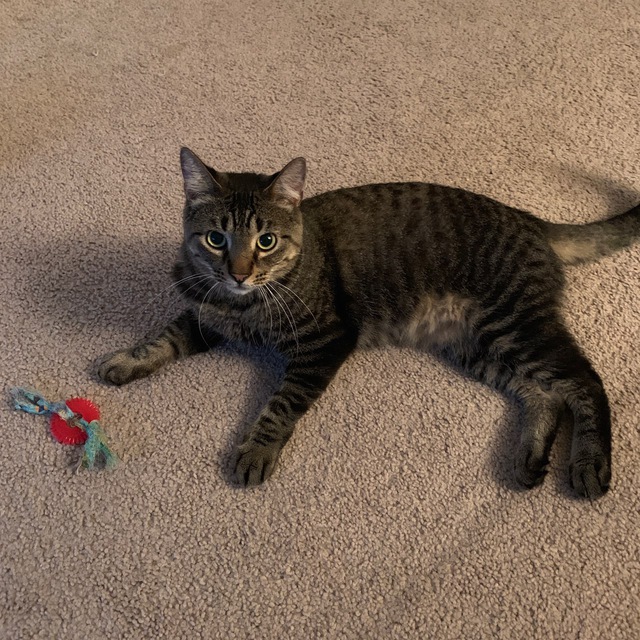 Alexander
Alexander
yes. You can use product.results.count() instead, in that case Pony will issue select count(*) ... query without loading all items into memory
 Matthew
Matthew
So with count(), the query that is failing would now be the first time .results is requested
 Alexander
Alexander
Yes, the query that is failing will load just added SpyResult object but as the collection is not fully loaded it will not raise any exception
 Matthew
Matthew
Would you say it's a good pattern to always do a count() query rather than len() of a normal query, to avoid this issue?
 Alexander
Alexander
I think it depends. Sometimes you want to iterate over all items anyway, and in that case count() query will be unnecessary, and count() result may differ from the actual number of collection items you get during iteration
 Alexander
Alexander
If you want to just know is some collection empty or not, the more efficient way is just check if product.results.is_empty()
 Matthew
Matthew
But if it's a filtered query, not just the whole results set, is_empty() seems not to be possible? So count() would be best?
 Alexander
Alexander
For query it should be
select(...).exists()
or
product.results.select(lambda: ...).exists()
 Lucky
Lucky
 Max
Max
Hi, guys... Who can provide simple example of group and join multiple tables with model... Like this Model.Select().join(Model)...How i can get only group without using aggregation function? Why Model.delete() is not work... Model.select().delete() work...
 Max
Max
PS... I know what Alexsander and Alexsey are core developers of pony) They only answers on the questions...
 Alexey
Alexey
Hi, guys... Who can provide simple example of group and join multiple tables with model... Like this Model.Select().join(Model)...How i can get only group without using aggregation function? Why Model.delete() is not work... Model.select().delete() work...
Here is example of left_join https://docs.ponyorm.com/api_reference.html#left_join
Model.delete() wouldn't know what object to delete - you need to call delete() on entity instance (an object), not an entity (class)
 Max
Max
Alexsey, do you can update pony docs with more powerfull example https://docs.ponyorm.com/working_with_entity_instances.html
 Max
Max
Yes, it does not know.. But if is not logically.. if coder dont select objects thеn tool remove all data from table
 Alexey
Alexey
Here you can find more examples:
https://github.com/ponyorm/pony/blob/orm/pony/orm/examples/estore.py
https://github.com/ponyorm/pony/blob/orm/pony/orm/examples/university1.py
 Alexey
Alexey
most queries that return an entity instance could be written using lambda - just put the condition part from the generator query to lambda
here are more details on using generator experssions and lambdas https://docs.ponyorm.com/queries.html
 Max
Max
Values_list? Model.select().values(fields=('name')) Columns to list... Is it right? list(Model.select(lambda x: x.name)).. i think it returns full model...
 Max
Max
For example we want to get list of properties... [c.name for c in Model.select()]... Its really looks weird
 Alexey
Alexey
1) list(Model.select(lambda x: x.name))
2) list comprehension, iterating on the result of to_dict
 Alexander
Alexander
Hi Maxim,
> Who can provide simple example of group and join multiple tables with model
Currently to grouping you need to use select(...) form of query:
select((x.a, x.b, max(x.c), sum(x.d))
for x in MyEntity if x.e > y)
will result to
SELECT x.a, x,b, max(x.c), sum(x.d)
FROM myentity x
WHERE x.e > %(param1)s
GROUP BY x.a, x.b
 Alexander
Alexander
There are two type of joins. The most convenient one is when you use explicitly defined entity relationships. The query
select(s for s in Student if s.group.department.name == 'Department of Network Technologies')
will lead to join of three tables - student, group and department
The same query can be written using filter method with lambda:
select(s for s in Student).filter(lambda s: s.group.department.name == 'Department of Network Technologies')
Instead of select function you can use select method of Student entity:
Student.select(lambda s: s.group.department.name == 'Department of Network Technologies')
 Alexander
Alexander
Currently the queries which use MyEntity.select(...) form restricted to return instances of MyEntity class only. If you want to return something else, you need to use select(...) function:
select((s.name, s.age) for s in Student)
 Alexander
Alexander
In the future we probably will add method to query which will allow to specify result columns using lambda function, something like project method:
Student.select(...).filter(...).project(lambda s: (s.name, s.age))
Currently we don't have such API, you need to use select((s.name, s.age) for s in Student) form or retrieve whole object and access necessary fields in Python
 Alexander
Alexander
The second type of join is explicit join without relationships. In order to make such join you need to write select(...) function with multiple for loops. For example, if you want to find different students with the same name you can write:
select(
(s1, s2) for s1 in Student for s2 in Student
if s1.id != s2.id and s1.name == s2.name
)
 Alexander
Alexander
If you want to convert query to list you can use slice:
query = MyEntity.select(...)
objects = query[:limit]
Or, if you want to retrieve all objects, you can just wrap query to list() constructor:
query = MyEntity.select(...)
objects = list(query)
 Max
Max
Uh, thanks.... select(s for s in Student).filter(lambda s: s.group.departament.name = '') equivalent to Model.select(lamda s: s if s.group.deparment.name == 'name' )... smaller...?
 Henri
Henri
hm... understand... filter not in api... futures..
https://docs.ponyorm.com/api_reference.html#Query.filter
 Budiyono
Budiyono
Hi Alex, just want to ask does Pony have feature to generate entities based on existing DB tables?
 Alexander
Alexander
Not yet. At this moment you can manually create entities which correspond to existing tables. It is possible to explicitly specify name of each table and column in model definition
 Lucky
Lucky
Maybe you can still automate it.
Most databases have a way to list existing tables and columns
 Romet
Romet
obviously needs fine tuning by hand afterwards but way better than doing it all from scratch i suppose
 Alexey
Alexey
I think we should we need to offer such a database reflection tool
@bsalim what database you currently use?
 Budiyono
Budiyono
 Budiyono
Budiyono
i m quite new to Pony :) mostly used Django ORM, thinking to switch to more lighter REST API framework with Pony ORM as main ORM
 Lucky
Lucky
I think we should we need to offer such a database reflection tool
@bsalim what database you currently use?
This feel like being part of migrations
 Matthew
Matthew
In [2]: select(u for u in User if u.id > 10) | select(u for u in User if 'gmail.com' in u.email_address)
—-------------------------------------------------------------------------
TypeError Traceback (most recent call last)
<ipython-input-2-e4a413899bc9> in <module😠)
—--> 1 select(u for u in User if u.id > 10) | select(u for u in User if 'gmail.com' in u.email_address)
TypeError: unsupported operand type(s) for |: 'Query' and 'Query'
 Micaiah
Micaiah
I've been away for this chat for a hot minute so I might have missed it if they came out already
 Lucky
Lucky
Is there an ETA on Pony migrations?
No, as far as I know,
there is only the migrants tool I wrote
Github.com/luckydonald/pony_up
 Святослав
Святослав
In [2]: select(u for u in User if u.id > 10) | select(u for u in User if 'gmail.com' in u.email_address)
—-------------------------------------------------------------------------
TypeError Traceback (most recent call last)
<ipython-input-2-e4a413899bc9> in <module😠)
—--> 1 select(u for u in User if u.id > 10) | select(u for u in User if 'gmail.com' in u.email_address)
TypeError: unsupported operand type(s) for |: 'Query' and 'Query'
I think it's bad idea make two queries in your case. Just extend filter condition.
 Matthew
Matthew
It seems like it could be a good way of building up queries with a lot of nested ands and ors
 Henri
Henri
If someone is interested in some insides of the Morepath web-framework, Martijn Faassen gave just a great talk at PyMunich.
https://www.youtube.com/watch?v=BUQhElQuxMI
 stsouko
stsouko
currently I do this:
sql_select = "x.bit_array %s '%s'::int2[]" % (operator, bit_set)
sql_smlar = "smlar(x.bit_array, '%s'::int2[], 'N.i / (N.a + N.b - N.i)') as T" % bit_set
select((x.molecule.id, x.id, raw_sql(sql_smlar)) for x in MoleculeStructure if raw_sql(sql_select)).order_by(raw_sql('T DESC')).limit(number * 2)
but order operation is slow. and I want limiting it.
 stsouko
stsouko
SELECT "x"."molecule", "x"."id", smlar(x.bit_array, '{1409, 2306, ......}'::int2[], 'N.i / (N.a + N.b - N.i)') as T
FROM "daniel"."molecule_structure" "x"
WHERE x.bit_array %% '{1409, 2306, ......}'::int2[]
ORDER BY T DESC
LIMIT 20
replace this by:
SELECT * FROM
(SELECT "x"."molecule", "x"."id", smlar(x.bit_array, '{1409, 2306, ......}'::int2[], 'N.i / (N.a + N.b - N.i)') as T
FROM "daniel"."molecule_structure" "x"
WHERE x.bit_array %% '{1409, 2306, ......}'::int2[]
LIMIT 20) as SQ
ORDER BY T DESC
 Alexander
Alexander
Yes, it is possible to write the most popular types of subqueries with Pony. I'm not quite understand at this moment what type of subquery you want to use

